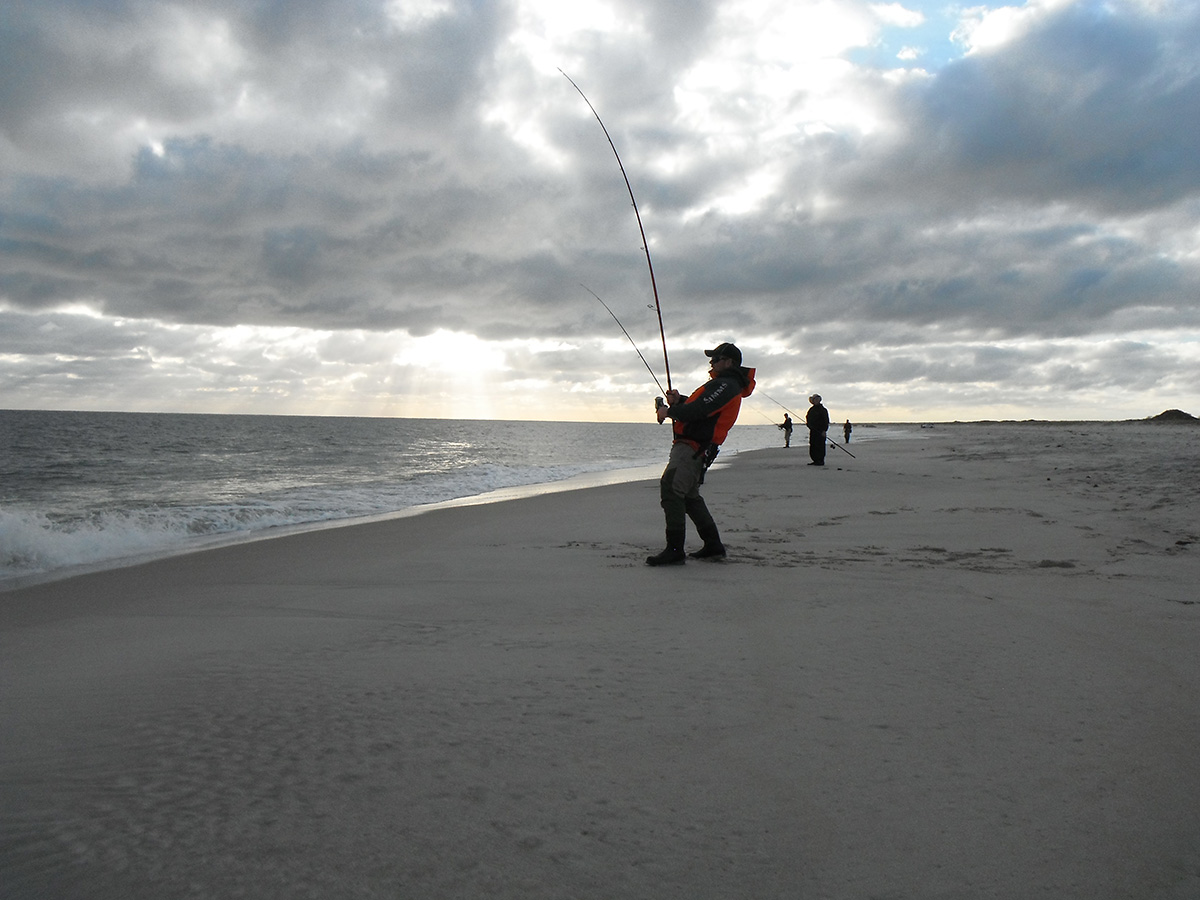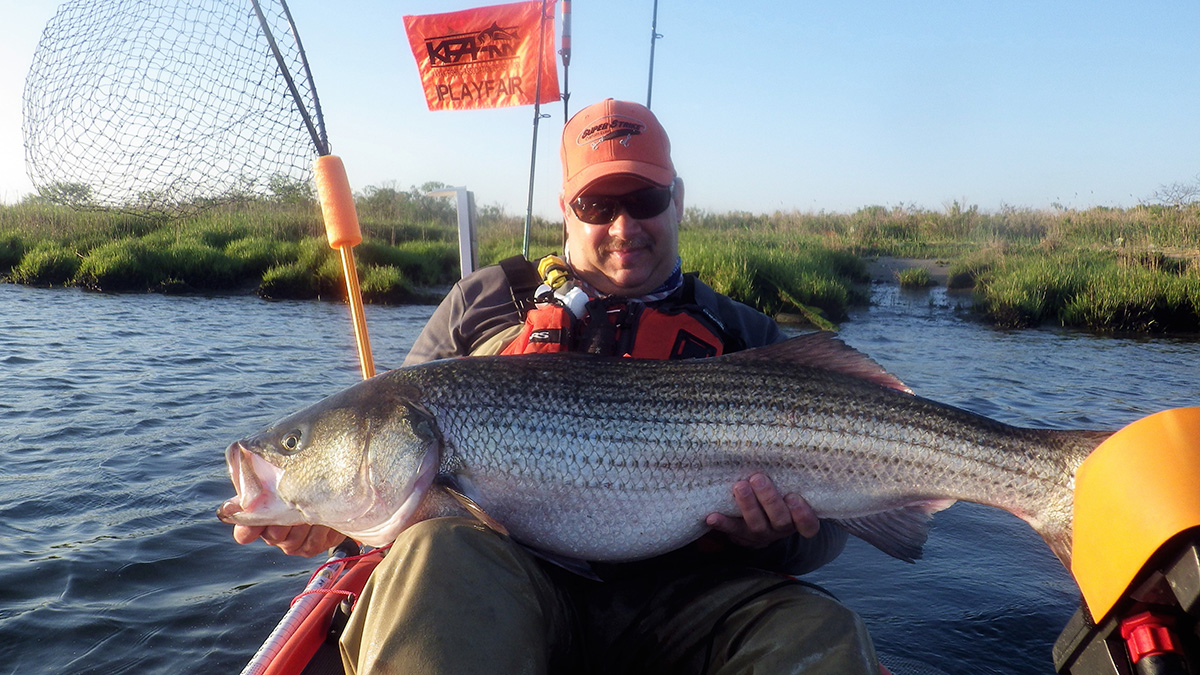
Tides and currents are the most important pieces of information I use planning out where I’m fishing. They’re even more important than weather, lure choice or color. I’ve noticed a lot of fishermen do not use tides as much as they should. Sometimes it seems they are more concerned with what lure to use and what color than finding out where the fish are going to be. If you find out where the fish will be actively feeding, you won’t have to concern yourself with these other details as much. Once you know the difference between tide and current, I will explain how to use tides to your advantage.
Tide Vs Current
Tides are the vertical movement of water. Current is the horizontal movement of water as it tries to stay “level” when the tides rise and fall. Tides are caused by the gravitational pull of the moon, and to a lesser extent, the sun. Because the moon’s rotation around the earth is slightly longer than our 24-hour day, the tides are slightly later each day. Here in the Northeast, we get high tides roughly twice a day. Twice every 24 hours and 50 minutes on average. If you caught fish at a spot at high tide at 2 a.m., and you are going back three days later to that same spot, you can quickly get a time for high tide. Since the tides are 50 minutes later each day you multiply 50×3, which equals 150 minutes, divided by 60, equals two and a half hours. High tide should be at 4:30 a.m.
This is a rough estimate; as the tides are not exactly 50 minutes later each day. They vary depending on where the moon phase is and commonly differ by 30 minutes or more a day during the course of a two week period. When the moon and sun are aligned, or closely aligned, the combined gravitational pull on the water causes higher high tides and lower low tides. This occurs when we have full or new moons. In between full and new moons the sun and moon are at an approximate 90-degree angle to each other, slightly canceling out each other’s pull. The tides during this period, also known as neap tides, are not as large as those during the moon phases. Moon phase tides are known as spring tides.
Winds can also have a profound effect on tides or water level. The persistent winds of a nor’easter pile water onto the shoreline. These winds can sometimes add 3 or 4 feet to high tide. The opposite is true for northwest winds. Strong northwest winds will push water out of our South Shore bays. This is especially true after a few days of persistent winds. Areas that you have never seen exposed will be high and dry.
In areas with flats or large expanses of shallow water, the new or full moon pushes more water onto the flats allowing gamefish to feed in areas that were previously too shallow for their comfort zone. These areas have an ample supply of bait because A – they are only accessible for few days every two weeks and haven’t been picked clean like the deeper areas of the flat and B – the forage, be it a crabs, shrimp or small baitfish, are more abundant because predator fish can’t reach them most of the time. Many of the South Shore’s back bays and North Shore harbors have flats areas. During high tide the baitfish push up into the grasses where they can feed while being relatively protected from predators above and below. When the tide starts dropping those baitfish are forced to vacate their safe haven. The predator fish know this. I have caught plenty of nice sized stripers in water that would be dry in a few hours, while they waited for the baitfish to flush out. Early in the outgoing tide you find some of these fish on the outside of the grass or in secondary channels. As the tide lowers they are in the main channels and eventually where the channels meet deeper water. Using this information and figuring out fish movement allows you to successfully and consistently fish the whole tide. When you realize how tides affect baitfish movement, it allows you to find and target fish with more consistency.

The following are two examples of how tides help you catch fish. Back in the 1980s before they built the new Shinnecock East jetty, there were broken down areas of the old jetty. Over the years tides, storms and currents eroded the jetty and parts of it fell into the inlet. Behind these openings of the jetty, were shallow bowls that filled up with water at high tide. Many times baitfish came in with the tide to escape the army of bass in the inlet.
It made sense that when the baitfish got flushed out of these safe havens by a dropping tide, the bass were waiting for them. For many years, right up until they built the new jetty, my nightly forays included an early visit to these bowls. Every time I fished that jetty I started the night by checking to see if baitfish, usually silversides, were in the bowls. I shined my light on the shoreline of the bowl. If they were there, I knew what the routine would be.
I positioned myself on the south rim of the “bowl” opening. Standing on the jetty I dropped my Bomber right at the edge of the rocks or where the water went over a couple of submerged rocks. More times than not, the bass were right there waiting. Over the years, I’ve caught hundreds of bass under similar conditions. Most were in the high teens and 20s, to the occasional 30-pounder. All of these fish were caught without making a cast, and the swivel of my leader was never more than a few feet from my rod tip. Talk about vicious hits!
The next example comes from that same jetty, during the same time-frame. At the southernmost tip of that jetty was roughly 75 feet of broken down jetty referred to by locals and regulars as the “Jungle.” During periods of high tides it was very hard to reach the end on anything but the calmest nights. During periods of rough surf, it remained unreachable even during low tides. During September, the mullet moved out of the bays, especially with the onset of a nor’easter or a few cold nights that caused a drop in bay water temperatures. They usually moved the most then, as they do now, during the last of the incoming to the first of the ebb. The bass harassed the mullet as they moved along the jetty until they reached the jungle.
Once they reached the jungle they swam into the rocks that were covered by 2 feet of water. They were safe for a while, but when the tide lowered, the mullet had to leave their temporary sanctuary and swim back to deeper water. The bass were waiting for them. A lot of these bass were big, 40-plus pounders and all were caught next to the jetty. My good friend, Steve Bunai, had more than one good night of multiple 30- and 40-pound fish on casts of no more than 10 or 15 feet. There are many examples I could give. I used these two because the jetty has changed and I’m in no danger of spot burning. It does, however, give you an idea of how to make tides work for you.
Tides are also important for the beach fisherman. It determines when predators can move into shallow bowls and troughs to feed on baitfish that were taking refuge in there. Tides also determine when the waves break on bars at the ideal height to produce white water. White water areas are great for gamefish. The chaos of roiling water and lack of visibility disorients baitfish making it easier for gamefish to catch their prey.
Our quarry uses this every chance it gets. The size of the waves coming in and the depth of the bar, dictate what part of the tide produces ideal white water. One could write volumes on tides and their effect on fishing but this overview should be enough to help put tides to work for you.


